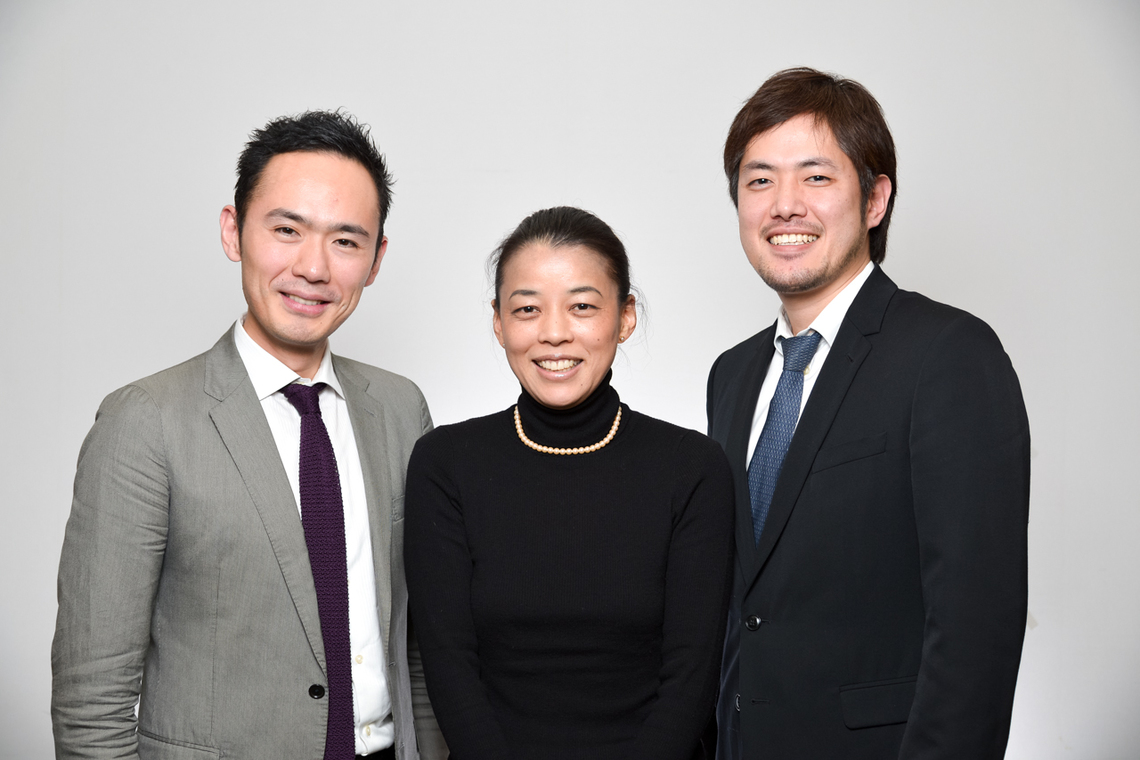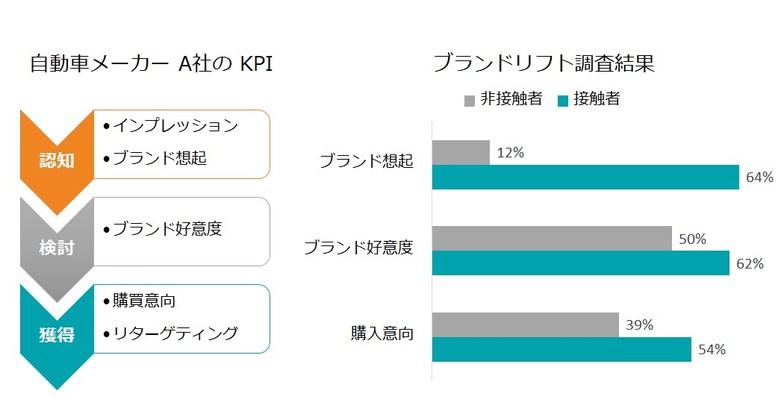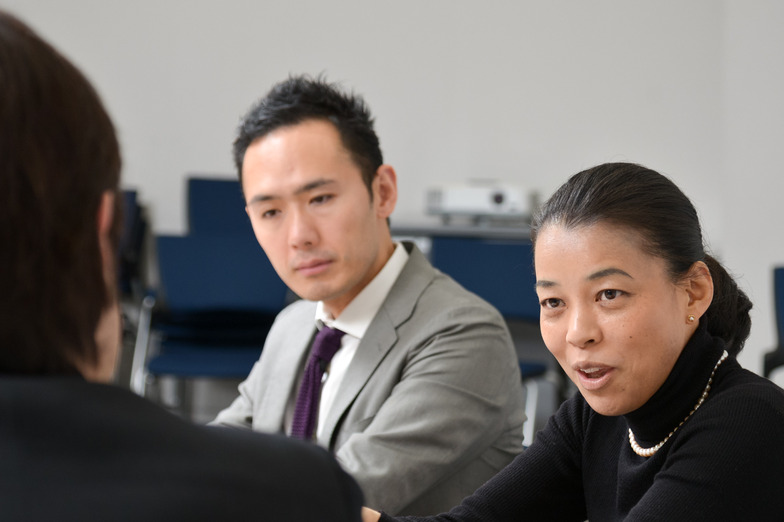This book presents a dialogue on content marketing from a practical perspective. For the second installment, spanning two parts, we speak with Hiroshi Shimose, President of Outbrain Japan. This time, we discuss the importance not only of creating content but also of distributing it. For background on Outbrain, please
refer to our previous article. Joining us this time is Keigo Aoki from Dentsu Inc. Business Creation Center, who is involved in business development for promising solutions in content marketing.

From left:Keigo Aoki (Dentsu Inc.), Akiko Gunji (Dentsu Inc.), Hiroshi Shimose (Outbrain Japan)
Gunji: First off—or rather, jumping right in—how would you, President Shimose, describe "content marketing"?
Shimase: Content marketing is a very broad topic, so I think it has quite a broad meaning. An example of traditional content marketing is the Michelin Guide. While the ultimate goal is to sell tires, they first provide valuable information to users, like restaurant listings, aiming to turn them into brand fans. As a consumer myself, I can relate to this approach.
However, attempting this on a large scale through mass marketing used to be extremely costly and time-consuming. But with the advancement of digitalization, these methods have become much more accessible.
Gunji: For consumers, it's become an era where we don't get sold to abruptly—or rather, it's actually a welcome change, right?
Shimase: For consumers, "valuable information" has become highly diverse, and the very concept of "value" itself changes extremely rapidly. Companies strive to respond by continuously disseminating fresh information digitally, leading to information overload.
This situation makes it essential to have tools that reliably deliver valuable information to each individual user at the right moment. In fact, this is often overlooked, but in content marketing, figuring out how to deliver content to users is just as important as creating high-quality content itself.
Gunji: That aspect is often dismissed with "just put up a banner, right?" So I'd really like to hear your thoughts on this, Shimose-san.
Shimase: Understood. As a prelude to that discussion, what makes Outbrain unique is its worldwide accumulation of content marketing knowledge resources. When I first met Outbrain staff in New York in November 2012, they had already been employing content marketing approaches for nearly a decade, including their predecessor services. Through that time, they experienced various successes and failures, reflecting that know-how into their services. They've amassed data from tens of thousands of clients to date, distilling the wisdom of content marketing.
While it's a given that success in the US doesn't automatically translate to success in Asia, Europe, or Japan, supporting the concept of content marketing in the digital realm through this service in Japan isn't about applying a one-size-fits-all approach. Instead, it's about leveraging global insights to support clients. For instance, when something happens, we can say, "This is similar to the Brazilian market," or "There's a successful case in the US for that field." This ability to utilize global knowledge is compelling, and I became convinced it could provide tremendous value to Japanese clients as well.
Gunji: You mentioned that failures and successes are consolidated into the service. How specifically are failures and successes defined in content marketing?
Shimose: To put it simply, it comes down to how KPIs (Key Performance Indicators) are set and whether they can actually be measured. Without KPIs, you can't tell what constitutes failure or success. Then, by measuring against the set KPIs, you enter a PDCA cycle of how to leverage that for the next step. If you're not conscious of driving this cycle, you create content, gain awareness, but end up wondering, "Was that really good enough?" That's one type of failure.
Gunji: When using Outbrain, how do you approach setting KPIs and defining goals?
Shimase: It varies significantly depending on the product/service and which stage of the purchase funnel you aim to reach users at, so it's hard to generalize. For example, if it's a product everyone owns and you're trying to stimulate replacement demand, you really need to uncover deeply buried latent needs. Otherwise, consumers won't internalize it as something relevant to them and reach the "buy" stage. Conversely, for some products or services, simply publishing content might lead consumers who find it to purchase. It really depends on the situation.
The crucial point with KPIs is whether the goal is awareness, the next stage of turning them into fans, or what action you want users at which stage of the purchase funnel to take. The type of content and how you engage them changes based on the "purpose."
For example, KPIs might be set based on various aspects like time spent on site, unique users, or new visitor rates.
Aoki: I believe Outbrain's unique aspect is that it recommends content from the recipient's perspective—the user—rather than the sender's convenience. We focus not on how many users it reaches, but on how many users we can deliver serendipity to. It's a unique service globally.
Gunji: From the user's perspective, it's a service that helps them find that gem of content shining brightly amidst the vast sea of diverse and abundant information, right?
Aoki: Exactly. Outbrain makes approximately 200 billion content recommendations monthly—a volume comparable to Google, Facebook, and Twitter combined. By accumulating data on these 200 billion "seen/not seen" interactions, we analyze when, where, and how people react to specific content, then incorporate these insights into our recommendation algorithm. Furthermore, we leverage this analyzed content consumption data to provide consultation services on what kind of content should be created. In other words, Outbrain is a platform that provides comprehensive support for content marketing—from content creation, to how it's distributed, to how it can be improved.
Gunji: The handoff between data and content planning is often where things go wrong, so having this dedicated "handoff zone" is reassuring.
Aoki: The reason I, in my position at Dentsu Inc., believed Outbrain was a good solution stemmed from my strong conviction that advertising can be highly valuable information if delivered at the right time to the right audience. I believe that by leveraging Outbrain's recommendations to create an environment where clients' content reaches the right people at the precise moment, the true value of advertising can be properly recognized again, and a beneficial environment for users can be provided. In content marketing, I believe the key focus should be not on how widely content spreads, but on how many people receive it as genuinely useful information.

Shimose: To give a concrete example, in Japan, we're often asked, "What kind of CTR (click-through rate) can you achieve?" Our response is always, "Focus on engagement over CTR." Rather than chasing high PV (page views) with clickbait headlines, we suggest looking at how each article's title drives engagement. Is it longer dwell time? Are readers exploring more pages? Isn't that more important? To put it bluntly, even if the cost-per-click increases, the right title is the one that attracts more readers who behave as intended after clicking through.
Gunji: As someone in charge, that's a pretty bold decision to make, right? It's easier to understand when you're looking at CTR.
Shimose: That's true. But as Aoki-san also mentioned, what's crucial in content marketing isn't how many users you get to see the content, but how many users actually engage with it. And then, based on that engagement, whether they can progress further up the purchase funnel. For example, let's say you have a product related to pregnant women and prepare an article on jogging tips for them. A title like "Are You Doing It Wrong? Your Jogging Method" might get a lot of clicks. It has a large audience, and everyone is interested. But, naturally, since it's an article aimed at pregnant women, the bounce rate is also high. Many people glance at it, realize it doesn't apply to them, and immediately leave. Therefore, rather than focusing solely on achieving a high CTR, it's crucial to think of the title as an invitation to the people you actually want to engage. A title like "Tips for Pregnant Women to Run Safely" is far more desirable. When it comes to targeting demographics right from the title, setting a title that aligns with the content is extremely important. This is just one example of an approach.
Gunji: It's difficult for those with an advertising background, but the key is to think in terms of engagement, not reach, right?
Shimase: This is just the very beginning. We possess global expertise while also accumulating local insights.
There is a way to create potential new markets.
Shimose: Let me share one example covering a wide range of KPIs, from "awareness expansion" to "acquisition." Unlike traditional campaigns, content marketing often aims to activate latent customers. Therefore, KPIs are frequently set for the same content based on the target audience's stage in the purchase funnel. This is a case from the U.S., involving a certain automotive manufacturer's brand.
There was an article introducing the fact that "a certain $30,000 model offers equivalent performance to a model twice its price." When disseminating this content, the KPIs for users at the "Awareness" stage of the purchase funnel were impressions. In other words, the KPI was how many potential customers became aware of it, and whether the brand came to mind when considering models was also a KPI.
For users already in the "consideration" stage, the main KPI is brand lift in terms of favorability. For the "acquisition" stage, since many people buy cars online in the US, we track this far. In this case, they investigated how much purchase intent increased after the campaign. For users who engaged with the content, brand lift occurred. In Japan, where online purchasing isn't common, metrics might focus less on final sales and more on tangible indicators like increased dealership foot traffic. In that case, the key isn't simply evaluating the increase in visitors, but rather the quality over quantity aspect: how effectively the content uncovered potential customers and how many high-value customers it generated who were likely to purchase.

Aoki: One reason clients repeatedly use Outbrain seems to be its ability to acquire many new users. Depending on the campaign, the new user rate can reach 80%. However, if you plan media using traditional targeting concepts during campaign design, you tend to reach primarily people already knowledgeable about that field. Overemphasizing targeting can lead to a situation where you've already acquired all the interested individuals, making it difficult to improve performance.
Gunji: That point is crucial, isn't it? In that context, how do you uncover latent needs and tap into new consumers?
Aoki: First, we prepare high-quality content and distribute it through discovery platforms like Outbrain. This allows users with latent interest to discover the content and come to us. Their exposure to the content makes their interest explicit, and when they take action, new users become visible.
Gunji: It's difficult to objectively determine if the initial content is high-quality, but rather than overthinking it, we need to go ahead and distribute what we believe is "high-quality" content and see the results. It's a bit scary though (laughs).
Aoki: Since the digital era began, I think the approach has shifted from "spreading" to "attracting customers." Rather than starting a campaign by pre-setting user personas and approaching a target group based on that, as was done traditionally, we first release content and test who reacts and how to understand the user profile. In other words, the people who react are the target. This method is feasible even on a low budget in the digital realm.
Gunji: So to effectively leverage this uniquely digital approach, we need to change how we do things, right?
【Gunji's eye】
Three key points emerged from my conversation with Mr. Shimase. First, it's crucial not just to create content, but to deliver it effectively. Second, we should aim for deep engagement rather than broad reach. Third, a new approach involves continuously releasing content into the world while refining our target audience. This revealed a facet of content marketing distinct from traditional advertising. Our second discussion with Mr. Shimase will touch on some concrete examples. Stay tuned.











